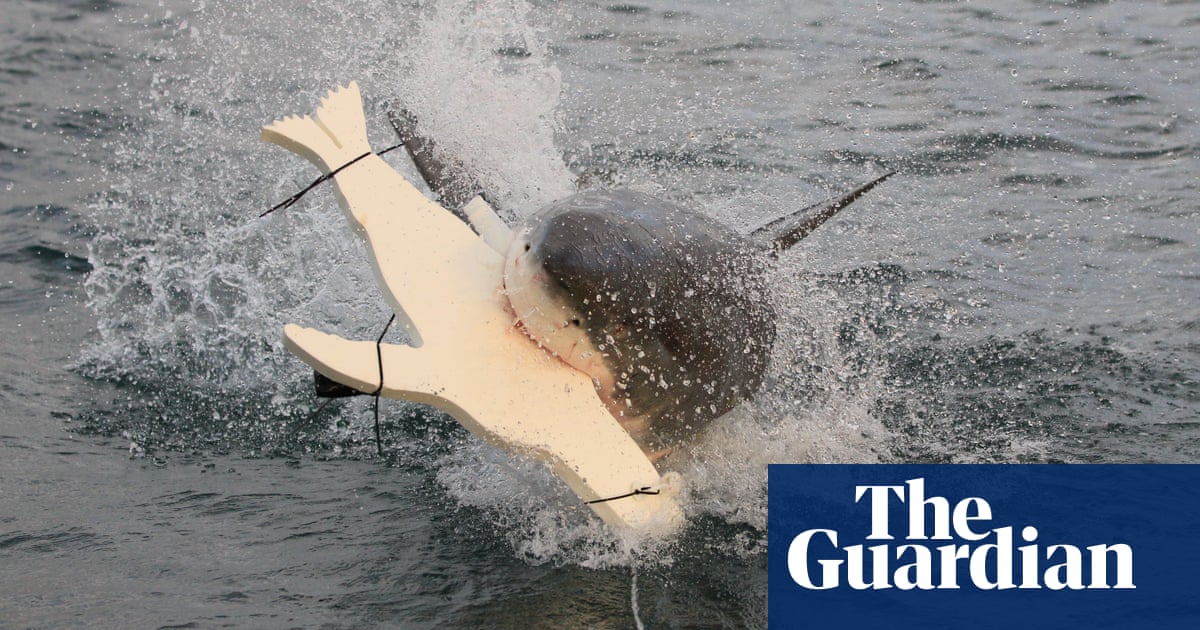Using LED lighting on the underside of surfboards or kayaks could deter great white shark attacks, new research suggests.
In an Australian-led study using seal-shaped decoys, underside lighting disrupted the ability of great whites to see silhouettes against the sunlight above, reducing the rates at which the sharks followed and attacked the artificial prey. The brighter the lights, the more effective the deterrent was.
The study’s lead author, Dr Laura Ryan of Macquarie University in Sydney, said white sharks seemed to rely on the visual cues of a dark object silhouetted against a lighter background.
“If you flip that to a light object on a dark background, then it doesn’t seem to be something they recognise as prey,” she said.
Ryan’s previous research on great whites suggests that attacks on humans may be a case of mistaken identity. The animal has a far lower visual acuity – the ability to see shapes and details – than humans.
Her work has suggested that juvenile great white sharks, from below, are unlikely to be able to clearly tell seals apart from swimmers or people paddling surfboards.
Other research has shown that sharks are colour-blind or at best have only limited colour perception abilities.
The new study, conducted in Mossel Bay, South Africa, involved towing decoys behind a boat for dozens of hours.
The researchers initially found success by covering the underside of the decoy entirely in lights. “But if you’re actually going to come up with something to protect people, [entirely] covering a surfboard … is just not practical because it’s a huge amount of lighting, which needs a huge amount of battery power,” Ryan said.
The researchers experimented with more sparse lighting options, finding that horizontal stripes of LED lights had a similar deterrent effect. “When you do horizontal stripes, the silhouette [appears] wider than it is long, so it’s less like a seal,” Ryan said.
Longitudinal strips of light, however, were not effective, nor were strobe lights, which gave the sharks momentary glimpses of the decoy silhouette. “Interestingly, just that small glimpse of the entire silhouette was enough for the white sharks to start biting the decoys,” Ryan said.
The scientists towed the seal decoy to encourage the white sharks to breach – one form of hunting involving rapid acceleration to the surface to catch prey. They say more research is required into shark behaviour with static decoys, which would resemble surfers waiting to catch a wave rather than actively paddling.
The team is testing a surfboard prototype with fitted lighting. “Surfers can be a little bit fussy with their surfboards,” Ryan said. “As a surfer, I want it to be usable.”
Globally, most shark bites are associated with people surfing or taking part in other board sports. Fatal shark bites, though rare, are mostly due to great whites.
The study, published in the journal Current Biology, noted it would be important to test whether lighting was also effective in deterring other speciesthat attack humans, including bull sharks and tiger sharks, as these have different predation behaviours.

